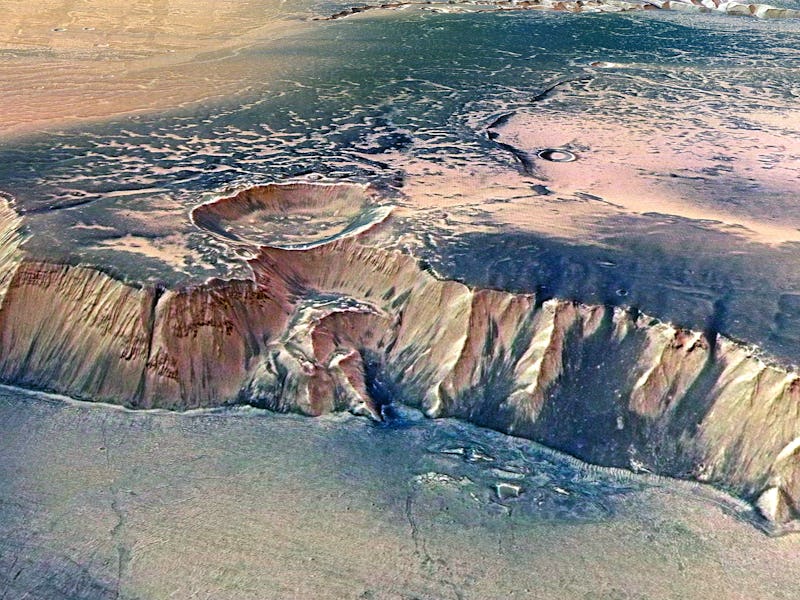New Research Finds Mars's Surface Is too Toxic to Support Life
It's more uninhabitable than we thought.

Looks like we’re in for a more toxic relationship with Mars than we thought. Scientists have now discovered that the surface of the red planet is a “toxic cocktail” of chemicals, making it very unlikely that any organisms could survive on the red planet’s landscape, let alone us.
The discovery came from analyzing the interactions between different elements present on Mars’s surface, and the result spells bad news for those hopeful that there’s any life living there now, or in the past.
In 2015, NASA’s Mars Reconnaissance Orbiter discovered signs of a powerful oxidant called perchlorate in what was perceived to be wet streaks running down canyons and crater walls on the planet’s surface. The presence of perchlorates on Mars had actually been detected by Mars Viking landers as far back as the ‘70s. It was theorized that alien bacteria could potentially use the perchlorates as an energy source, implying that perceived damp streaks spotted on Mars’s surface were some of the best bets for places to look for microbial life.
Dark, narrow streaks captured by NASA's Mars Reconnaissance Orbiter are thought to contain perchlorates and possibly water.
But a study published July 6 in the journal Scientific Reports by Jennifer Wadsworth & Charles S. Cockell of the University of Edinburgh think otherwise. The scientists looked at how a soil bacterium fared when it was mixed with perchlorates and then subjected to ultraviolet rays similar to those on Mars. Two other components of the Martian surface were added, iron oxides and hydrogen peroxide, and the result was rapid cell death.
“These data show that the combined effects of at least three components of the Martian surface, activated by surface photochemistry, render the present-day surface more uninhabitable than previously thought, and demonstrate the low probability of survival of biological contaminants released from robotic and human exploration missions.”
In one sense, that last part is a good thing, as scientists had been worried about releasing Earth-based contaminates on Mars if a spacecraft touched down near Martian life. But while this toxic atmosphere wipes out any chances of that, it also appears that the combination of perchlorates and UV rays have created an exceptionally deadly marriage for cell life.
“Irradiated perchlorate had a significant bacteriocidal effect (Fig. 1). Cell viability was completely lost after 30 seconds exposure. By contrast, the control cells exposed to UV radiation without perchlorate took 60 seconds to be completely sterilized.”
“I can’t speak for life in the past,” Wadsworth told The Guardian. “As far as present life, it doesn’t rule it out but probably means we should look for life underground where it’s shielded from the harsh radiation environment on the surface.”
In terms of life below the surface, the European Space Agency intends on sending its ExoMars rover to the red planet by 2020. The rover is equipped with a drill that has the ability to bore six and a half feet below the ground — far enough down to surpass the portion of the planet most affected by this toxic cocktail.